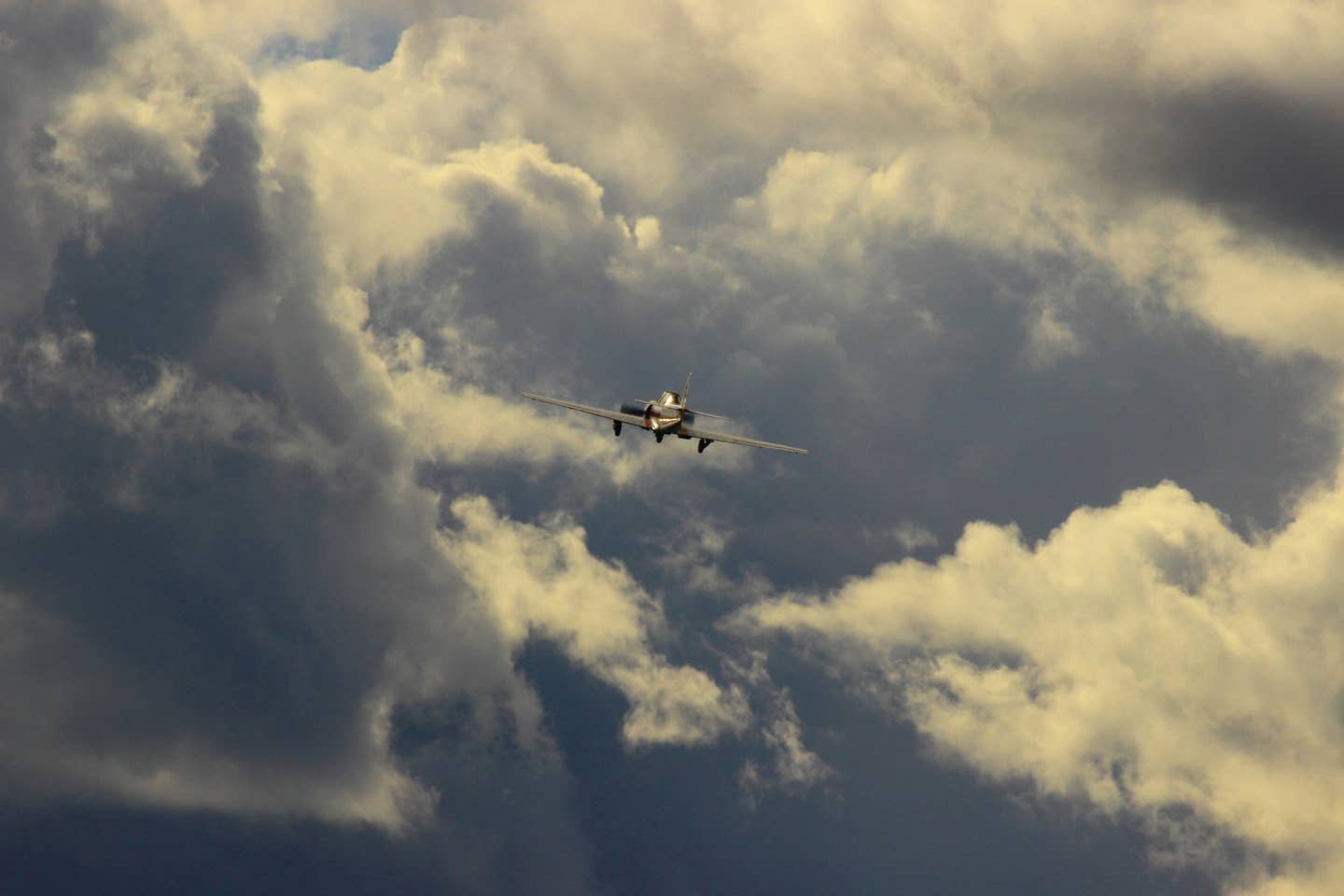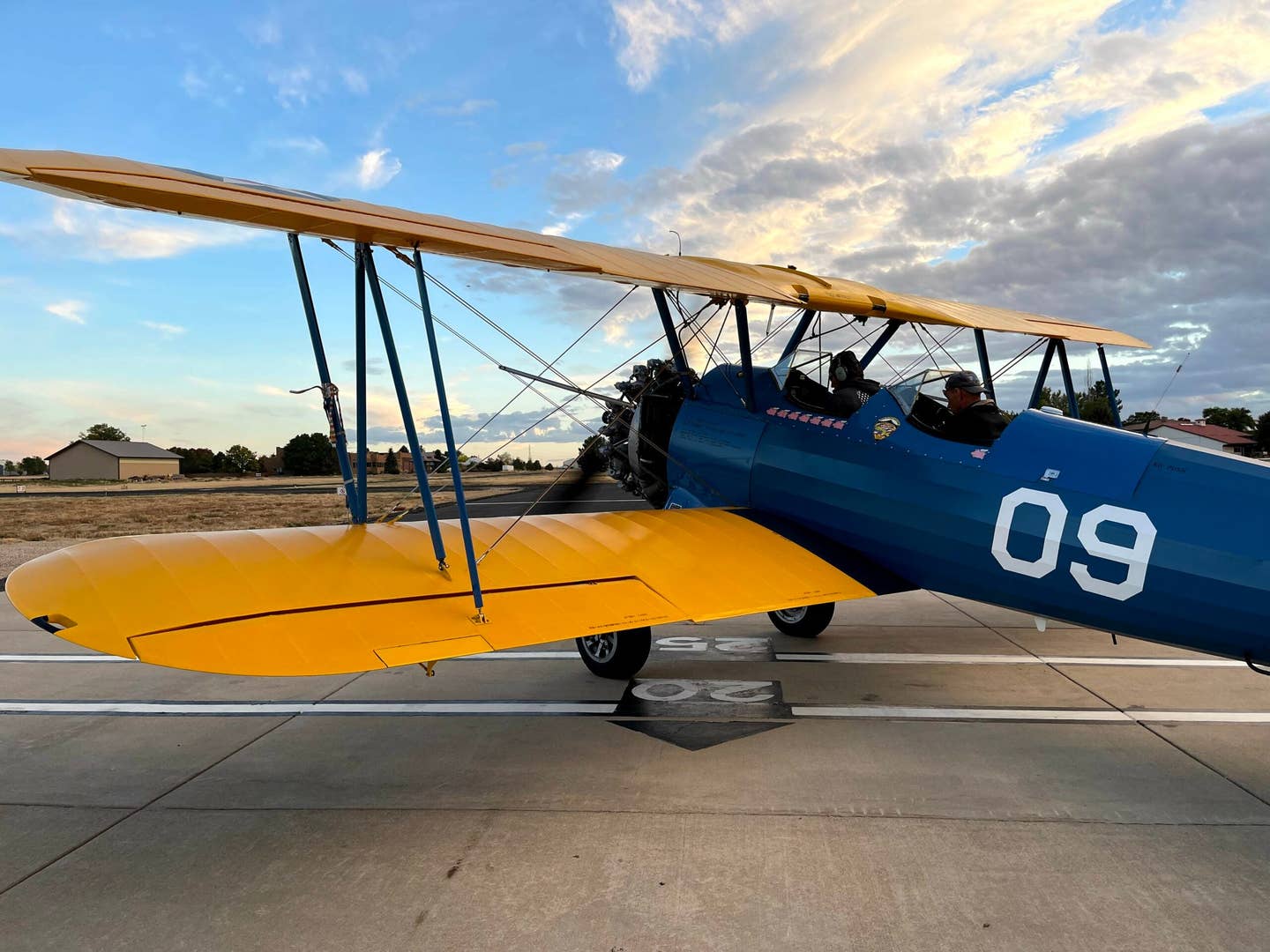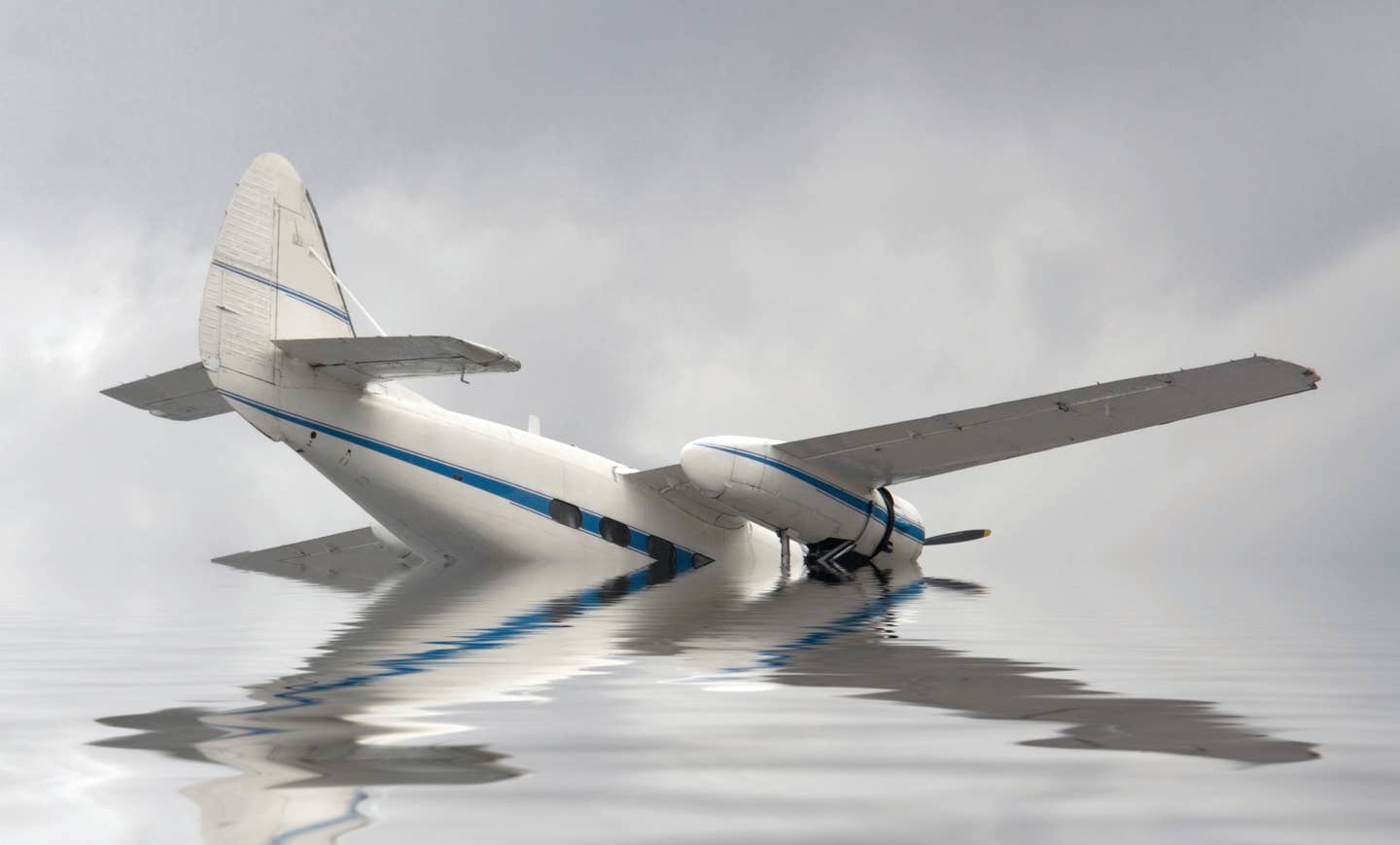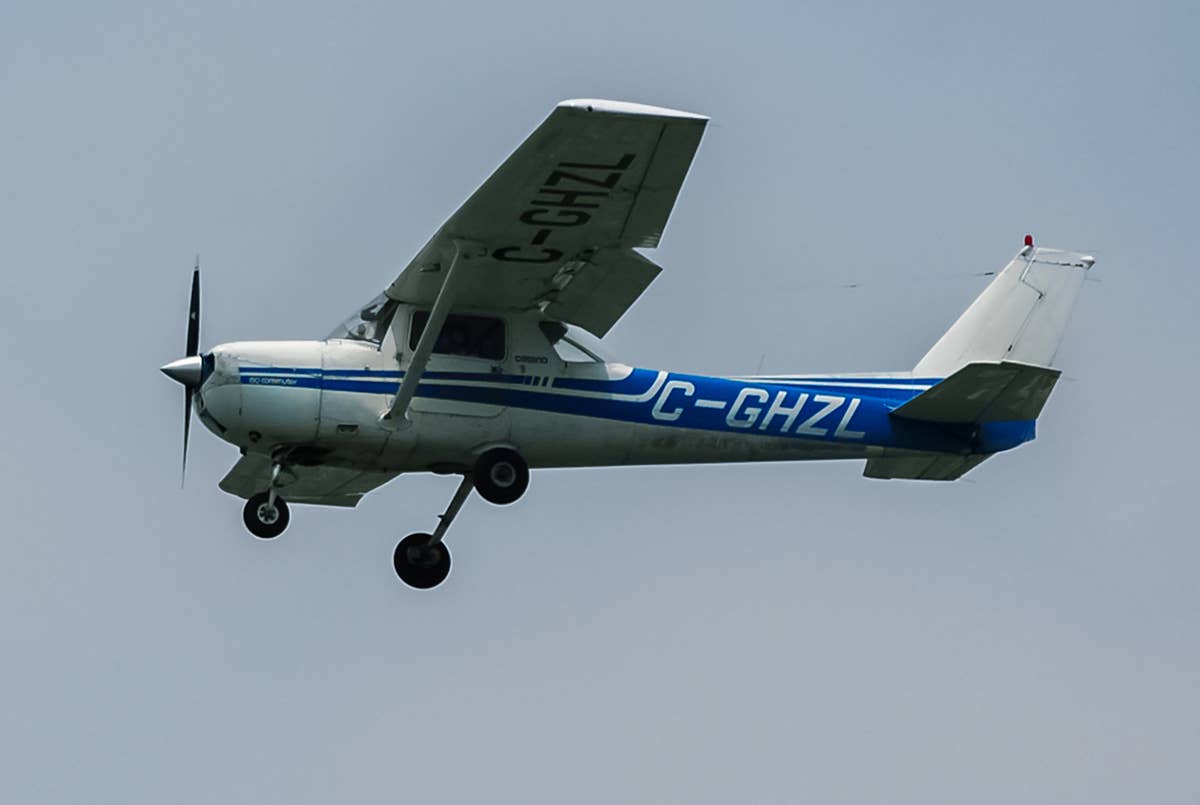How Can an Aircraft Get Struck by Lightning Without a Close Thunderstorm?
About 40 percent of all discharges involving airborne aircraft occur in areas where no thunderstorms have been reported.
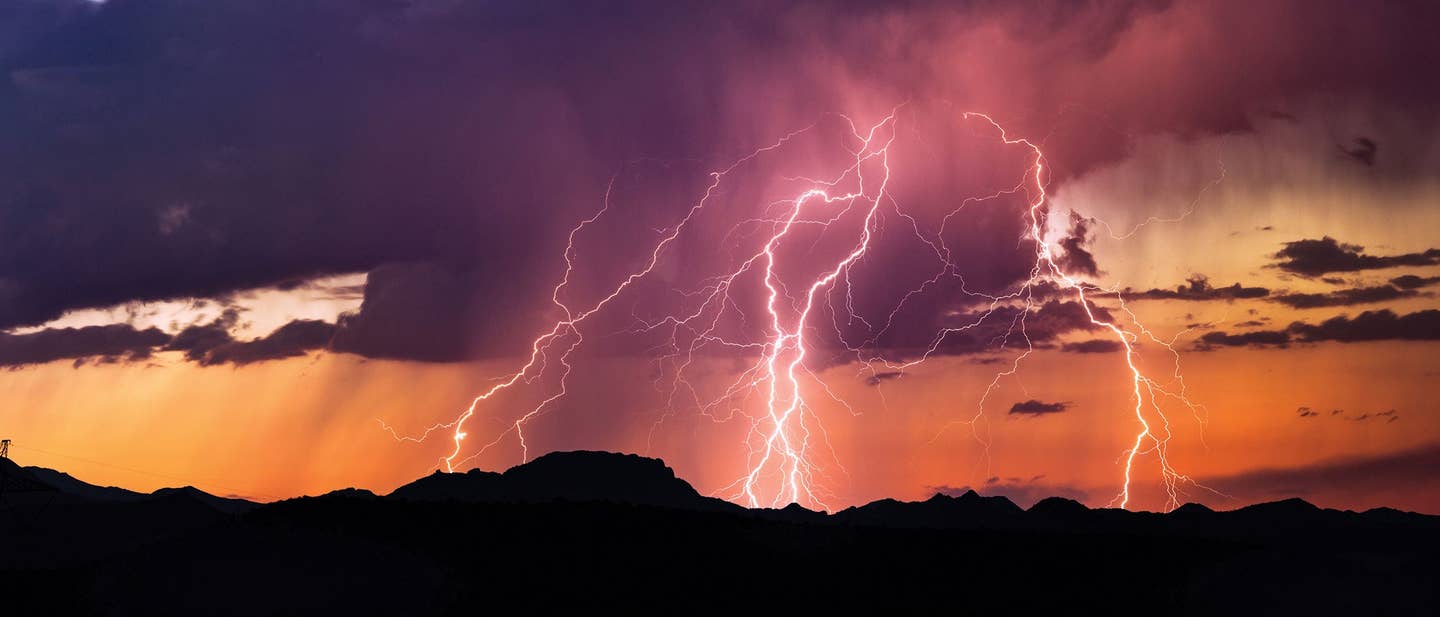
Studies show that about 90 percent of the lightning strikes to aircraft are thought to be initiated by the presence of the aircraft itself. [Credit: iStock ]
Question: A friend of mine was flying a Cessna 210 the other day and was struck by lightning, but there weren't any thunderstorms nearby. How can this happen?
Answer: There are many observed cases of lightning strikes to aircraft inside or near clouds that had not previously produced natural lightning. Studies show that about 90 percent of the lightning strikes to aircraft are thought to be initiated by the presence of the aircraft itself. The scary statistic, however, is that 40 percent of all discharges involving airborne aircraft occurred in areas where no thunderstorms were reported.
Apollo 12
One of the more famous cases of aircraft-initiated lightning is the Apollo 12 launch at the Kennedy Space Center, Florida, in November 1969. The Saturn V rocket was struck not once but twice on its way into orbit.
According to the 1970 NASA findings, other than these two strikes, there was no other lightning activity reported six hours before or six hours after the launch. At the time of the launch, a cold front was moving south into the launch area. Broken towering cumulus topping out at 23,000 feet with light to moderate rain showers were reported.
Rarely Fatal
Damage to airborne aircraft struck by lightning includes minor pitting or scarring to the aircraft’s skin to complete destruction of the aircraft.
Besides direct damage at the point of entry and/or exit, indirect effects that include the loss of VHF communication, loss of navigation equipment, and loss of instrument panel gauges are also possible.
In 1963, a Pan American Airlines Boeing 707 over Elkton, Maryland, was struck by lightning while in a holding pattern at 5,000 feet. The outermost fuel tank in the left wing exploded causing two other fuel tanks to follow suit. There were no survivors.
It’s certainly true that a catastrophic accident such as this is extremely rare, but lightning strikes to aircraft are more common than you might imagine—most of which are aircraft-initiated strikes.
Based on compiled data it is estimated that in the U.S. a commercial airliner is struck once for every 3,000 hours flown. That’s an equivalent of about one strike each year.
Melting Level
While aircraft-initiated lightning is still being actively studied, there are a few important characteristics to consider.
Based on the current research, it doesn't take flying in or near a mature thunderstorm to become the victim of a lightning strike. The mere presence of the aircraft in an environment conducive to an electrical discharge is all that is necessary.
Most of the aircraft-initiated lightning strikes occur when the aircraft is flying at or near the melting level (0 degrees Celsius). The preferred temperatures include a range from plus-3 C to minus-5 C, with the highest number of incidents occurring right at the melting level.
A few of the strikes down low are the result of an aircraft intercepting a lightning strike in progress. Essentially, this is the case of being in the wrong place at the wrong time.
On the other hand, aircraft-initiated strikes are observed the most are between 3 km and 5 km or 10,000 to 16,000 feet during the warm season. Once again, temperature is a key factor. The melting level that typically occurs is in this same range of altitudes throughout the summer months.
Low-Topped Convection
In general, natural lightning in deep, moist convection doesn't form until the tops of the storm build well above the melting level.
For lightning to form, three ingredients must be simultaneously present. These include vapor-born ice crystals, graupel, and supercooled liquid water. If any one of these three is missing in sufficient quantities, natural lightning doesn't generally occur, but this not to say the cloud is void of all electrical activity—some still remains.
Therefore, an aircraft-initiated lightning strike typically occurs within local air mass instability within low-topped convection.
Often low-topped convection doesn’t produce natural lightning. The updrafts are rather weak in comparison to those that do produce lightning. Consequently, the updrafts do not carry enough supercooled liquid water into the upper part of the cloud where it is needed.
- READ MORE: What Are Echo Tops?
Clouds and Precipitation
An overwhelming number of lightning strikes occur within the cloud itself. Only a very small percentage of strikes occur outside of the cloud boundary or below the cloud.
Here’s the key: A very large percentage of the strikes occur within precipitation to include rain, snow, snow grains, ice pellets, and hail. It is not uncommon to find a mixture of these near the melting level.
Keep Your Distance?
The FAA encourages all pilots to keep a safe distance from an active thunderstorm for obvious reasons.
Unfortunately, this practice alone isn’t quite enough. Even when thunderstorms (natural lightning) are not occurring or expected to occur, an aircraft-initiated lightning strike can still be a risk.
In order to avoid an encounter with lightning, the best advice is to remain in cloud-free air whenever possible, especially when the atmosphere is conditionally unstable and capable of producing marginally deep, moist convection extending well above the melting level.
While it may be difficult, the best advice is to operate outside of areas of precipitation and minimize your time in clouds and precipitation near the melting level.

Subscribe to Our Newsletter
Get the latest FLYING stories delivered directly to your inbox

